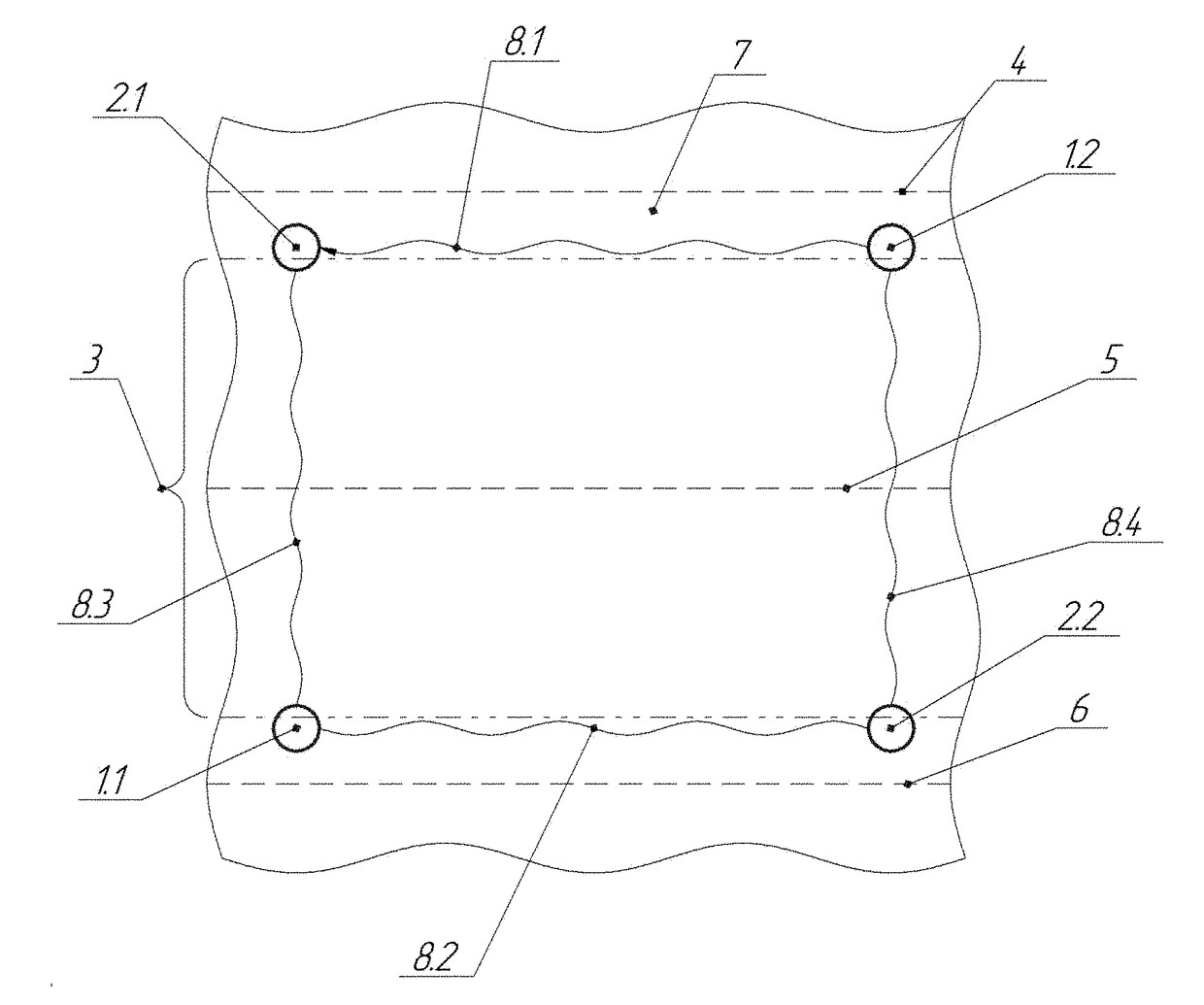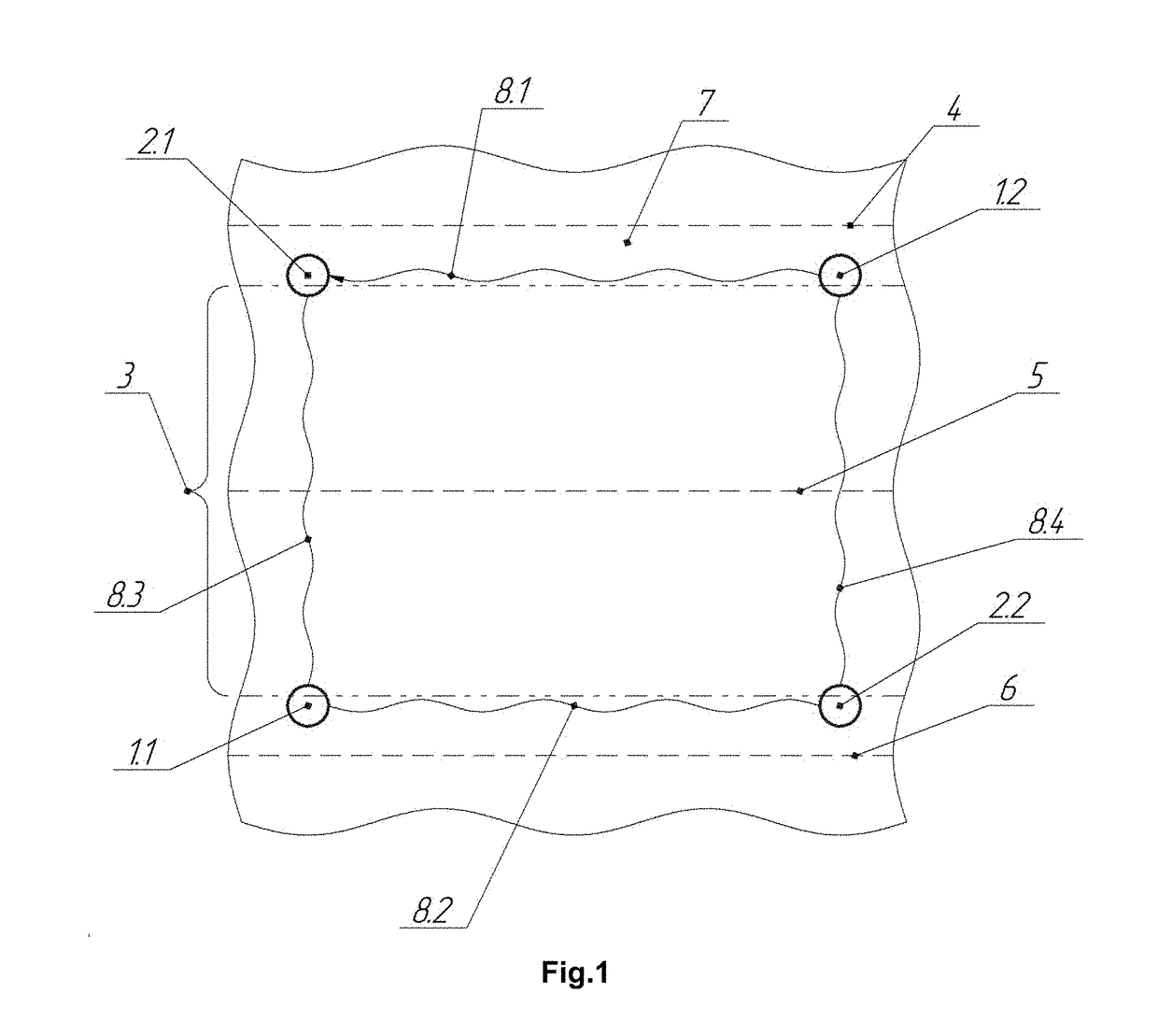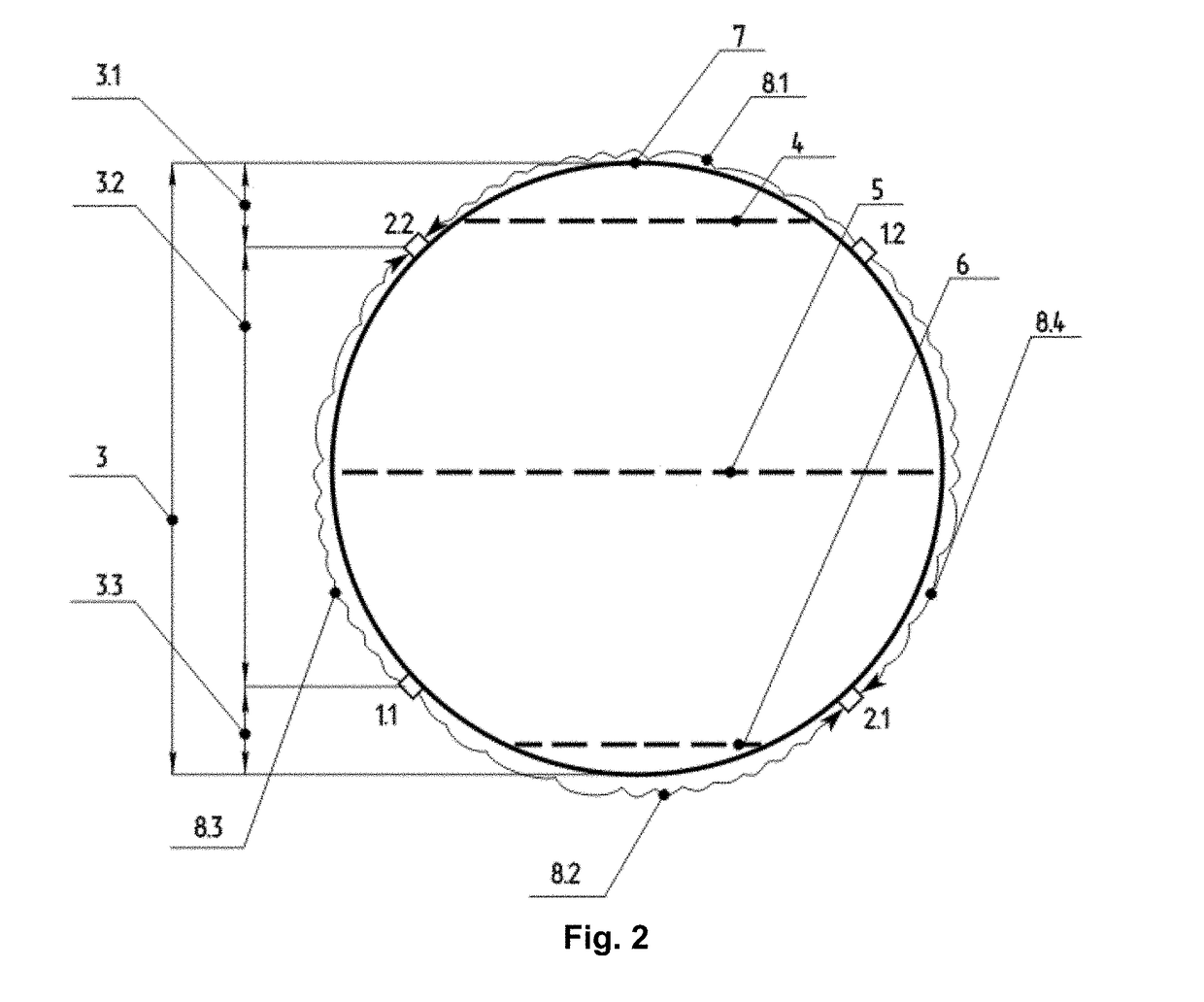The
disadvantage of this method of controlling the liquid level, which reduces its reliability and accuracy, is the
instability of the amplitude of the information
signal when the thickness of the walls in the tank changes due to
corrosion or
exposure to aggressive media and overgrowing with residual components of the liquid reagents.
The
instability of the information signal in this method is also caused by changes in the acoustic resistance of the
contact layer between the acoustic transducers and the wall of the tank.
The
disadvantage of this device is low reliability and accuracy caused by the dependence of information signals on the influence of destabilizing factors, for example, the changing acoustic resistance of the
contact layer between the acoustic sensors and the tank wall.
A disadvantage of the second method for liquid level control is the insufficient reliability due to the fact that the paths and propagation velocities of the
longitudinal wave and the Lamb wave are different, so the time interval for their reception can coincide (overlap) with the reception of reflected signals propagated in the tank wall.
Besides, the amplitude
instability of its signal is due to the non-stable properties of the liquid, the level of which is controlled, for example, by the
compressibility β, on which the
speed of sound depends.
The disadvantages of this method of controlling the liquid level, which reduces its reliability and accuracy, include the fact that it uses a
surface wave as a reference signal, velocity of which is less than the Lamb
wave velocity, which is used as an information wave.
As a result, the
time zone for receiving the reference signal can coincide with the action of other
waves propagating in the wall of the tank, including reflected ones, which reduce the reliability of its signal identification.
The second disadvantage is related to the fact that the initial adjustment and start-up of the liquid level control a priori assumes the presence of a good acoustic contact between the emitter and the receiver, and also the relative invariance of the acoustic characteristics of the paths of the
surface wave and the Lamb wave, which can not always be observed.
The disadvantages of this device are low reliability and complexity.
The design of the acoustic emitter and receiver, which comprises two piezoelectric transducers, thus forming two paths of
signal conditioning by various elements of the acoustic emitter and receiver, requires the identical influence of external factors, in particular, temperature, on the characteristics of these elements, which is practically difficult and leads to
distortion of the final signal informing about the position of the monitored liquid level.
Insufficient accuracy is also due to the fact that the
hysteresis characteristic of the amplitude of the information signal as a function of the position of the liquid level in the
control zone closely adjacent to the line on which the acoustic emitter and receiver are located creates an ambiguous relationship between the
set point of the amplitude of the information signal and the position of the liquid level in this zone.
Insufficient reliability of the device is due to its complexity.
Actually, additional complicated technical procedures are required to meet this condition.
Moreover, this patent considers only cases of either vertical or horizontal arrangement of pairs of transducers and measurements are made only on these individual pairs, and the results of measurements obtained from horizontal pairs are not used to increase the accuracy of measurements obtained from vertical pairs by adjusting (graduating) the measuring scale.
However, the use of an anti-symmetric Lamb wave only (and a symmetric one only, too) is affected by destabilizing factors (for example, temperature, etc.) in the process of measurement, which inevitably makes measurements less accurate.
The disadvantage of this method is the need for preliminary calibration of at least the initial and final values of the measuring scale, which presupposes the fixation of these values with a deliberately filled and drained tank to levels beyond the
control zone (above and below the sensor installation area), and knowing and taking into account the parameters of the tank wall, which affect the characteristics of the Lamb wave, which, in general, is not always possible.
Without the use of additional level control means that allow the calibration scale to be calibrated directly on site, it is not possible to achieve accurate measurements, as well as high speed of their conduct.
Prior to putting the device into operation, this calibration procedure requires at least one
full cycle of draining or filling the tank with liquid in such a way that the liquid level passes through the entire established
control zone with the fixation of the required level control points by other means, which is not always possible.
For example, in the case of an
oil tank with a capacity of several thousand tons, a test drain or fill, even a small level for adjusting the scale, will be impossible for technological reasons due to large volumes of pumping, which can be available only under operating conditions.
The above drawbacks limit the scope of the device and do not provide accurate measurements within a short period of time (i.e., to perform high-speed fine-tuning to get precise measurements).
 Login to View More
Login to View More  Login to View More
Login to View More 


